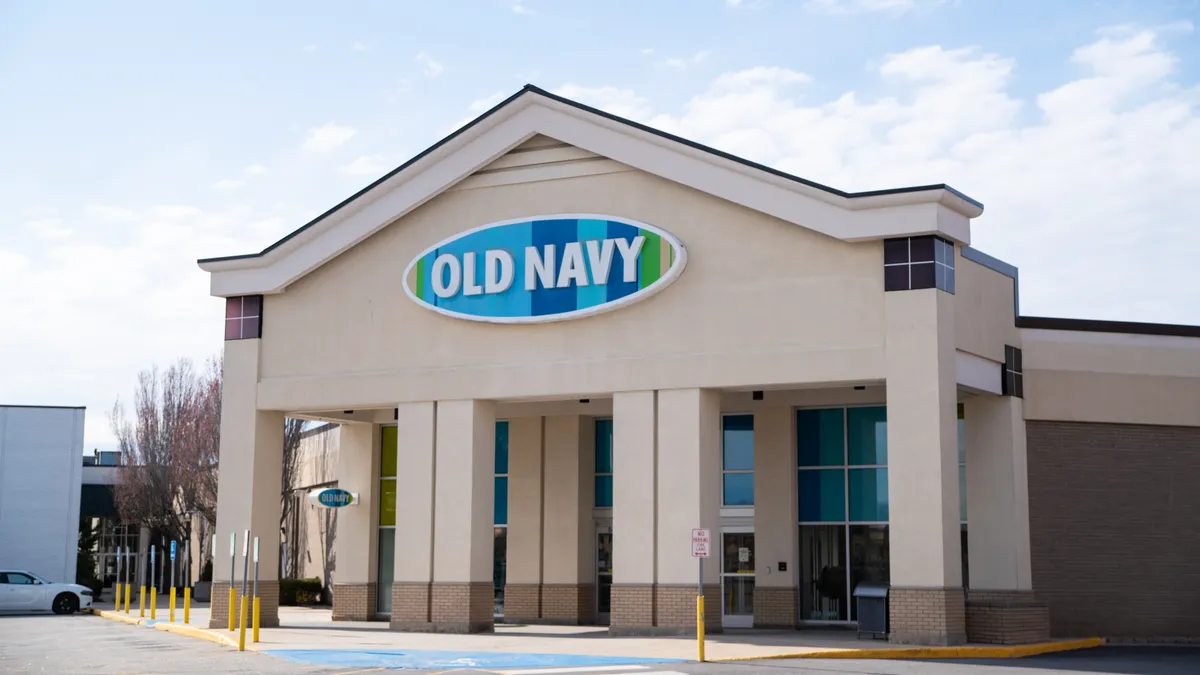Dive Brief:
- Gap Inc. on Thursday reported lopsided first-quarter results among its brands, with strength at Old Navy and Athleta unable to prevent a 43% plunge in net sales with stores shut most of the period due to the pandemic. Gap Inc. swung to an operating loss of $1.2 billion from operating income of $316 million a year ago and to a net loss of $932 million from $227 million in net income last year.
- The company is leveraging the situation wrought by COVID-19 and exacerbated by civil unrest in some areas to renegotiate leases. In some cases where that's unsuccessful stores will permanently close, mostly at Gap, CFO Katrina O'Connell told analysts on a Thursday conference call. The company has reopened 1,600 stores or 55% of its fleet, she said.
- Executives announced a 15% cut to the company workforce across all brands, with Gap cutting its headcount by 25%.
Dive Insight:
Gap Inc. — already struggling with leadership turnover, declines at its namesake brand and a failed attempt to spin off its Old Navy banner — appears to have been hit harder by the pandemic's temporary store closures than other apparel retailers. The company's 43% net sales decline was worse than most specialty retailers, according to BMO Capital Markets analysts.
Old Navy, which had already begun in-store pickup services before the restrictions placed on brick-and-mortar spaces, fared best. The banner's store sales were down 60% but online sales did rise 20%. By contrast, Gap store sales fell 64% and online sales were also down 5%, and Banana Republic store sales fell 61% while online sales fell 2%.
Each suffered its own particular disadvantages, however. Old Navy most likely achieved much of its e-commerce growth through heavy discounting on its already low-priced merchandise, Wells Fargo analysts led by Ike Boruchow said in emailed comments. Banana Republic suffered from its emphasis on workwear at a time when people are working from home, according to company executives and several analysts. Meanwhile, namesake Gap continued to suffer from the same lackluster assortment that has plagued it for a while, according to GlobalData Retail Managing Director Neil Saunders. Athleta, perhaps the strongest of the lot, is too small to notch much of a difference for the wider company, Saunders said.
Gap's trouble is now in stark relief. While executives touted the longstanding strength in the brand, once a definer of American casual style, they didn't elaborate much. Newly minted CEO Sonia Syngal said that "Gap stands for modern American optimism" and that its assortment of kids, baby and denim would "get more and more focused and deeper." But that will have to happen with greater efficiency. Executives said they are committed to reducing Gap's store count and boosting its online growth, although earlier they had acknowledged that e-commerce, especially through store fulfillment, is more costly.
Old Navy stores and other brand stores in off-mall locations generally perform better than mall locations, executives said. While closing more Gap stores, especially in enclosed malls, may be wise, the quarter's results show that it could further endanger sales. The brand's e-commerce decline reveals that "a fair proportion of sales are driven, not by a burning desire to visit and buy from Gap, but from chance visits to stores and impulse buys often stimulated by excessive discounting," Saunders said in emailed comments. "As soon as stores are closed, Gap drops off the radar and consumers have neither the will nor inclination to shop the brand online."
Q1 net sales by brand in Q1
| Brand | YoY |
|---|---|
| Gap Global | -50% |
| Old Navy Global | -42% |
| Banana Republic Global | -47% |
| Athleta | -8% |
Source: Gap Inc. press release *Comp sales not reported due to mass store closures in the quarter.
As at other apparel retailers and brands, having little opportunity to sell spring and summer styles, Gap is "packing and holding" some inventory for upcoming seasons. But that strategy, coupled with a lawsuit filed this week by mall operator Simon Property Group over unpaid rent, muddies the company's future, according to Wedbush analysts led by Jen Redding. What is clear is that Gap Inc. lags behind rivals in an apparel market where already weak growth was decimated this quarter.
"[T]he 43% drop in sales is more precipitous than many of its peers in the apparel space — including Abercrombie and Urban Outfitters — and is even worse than Kohl’s, which trades in a very soft part of the market," Saunders said. "In our view, this underlines the fact that the impact of the coronavirus crisis has been uneven, and more pain is being felt by already weak players, of which Gap is one."













